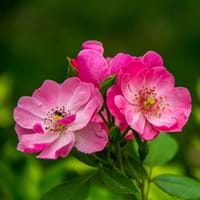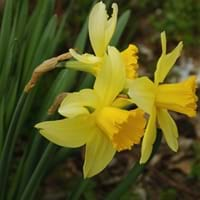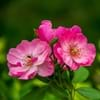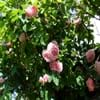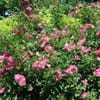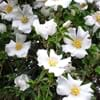Life Span
Perennial
Perennial
Type
Flowering Plants
Bulb
Origin
Europe, India, Northwestern Africa, United States, Western Asia
Asia, Central Asia, Eastern Asia, Southwest Europe
Types
Not Available
Accent, Acropolls, Cassata,Dellbes, Flower parade, Hawera
Number of Varieties
Not Available
Habitat
disturbed sites, Roadsides, stream banks, Woods
Hillside, Open scrub, River side, Rocky areas, Scrubs, Woods
USDA Hardiness Zone
Not Available
3-9
AHS Heat Zone
Not Available
9-1
Sunset Zone
Not Available
A2, A3, 1a, 1b, 2a, 2b, 3a, 3b, 4, 5, 6, 7, 8, 9, 10, 11, 12, 13, 14, 15, 16, 17, 18, 19, 20, 21, 22, 23, 24
Habit
Upright/Erect
Clump-Forming
Flower Color
Lavender, Light Pink, Pink, Purple, White
Ivory, Lemon yellow, Peach, White, Yellow, Yellow green
Flower Color Modifier
Bicolor
Bicolor
Fruit Color
Non Fruiting Plant
Not Available
Leaf Color in Spring
Green, Gray Green, Dark Green
Green
Leaf Color in Summer
Green
Green
Leaf Color in Fall
Green, Gray Green, Dark Green
Green
Leaf Color in Winter
Green, Dark Green
Green
Leaf Shape
Pinnate
Linear
Plant Season
Spring, Summer
All year
Sunlight
Partial shade, Partial Sun
Part sun
Growth Rate
Medium
Medium
Type of Soil
Clay, Loam
Clay, Loamy, Sandy
The pH of Soil
Alkaline
Acidic
Soil Drainage
Well drained
Well drained
Bloom Time
Spring, Summer
Early Spring, Late Spring, Spring
Tolerances
Wet Site
Black Walnut Toxicity
Where to Plant?
Container, Ground, Pot
Ground
How to Plant?
Seedlings, Stem Planting
From bulbs
Plant Maintenance
Medium
Medium
Watering Requirements
Keep the ground moist but not water-logged
It cannot sustain wet-feet, Keep the ground moist but not water-logged, Water Deeply, Water when soil is dry
In Summer
Lots of watering
Lots of watering
In Spring
Moderate
Moderate
In Winter
Average Water
Average Water
Soil Type
Clay, Loam
Clay, Loamy, Sandy
Soil Drainage Capacity
Well drained
Well drained
Sun Exposure
Partial shade, Partial Sun
Part sun
Pruning
cut main flower spike, Remove dead branches, Remove dead or diseased plant parts
Cut or pinch the stems, Prune to control growth, Remove dead leaves, Remove dead or diseased plant parts
Fertilizers
Apply 10-10-10 amount, as it is a flowering plant, use high phosphorous content fertilizer
All-Purpose Liquid Fertilizer
Pests and Diseases
Grasshoppers
Basal rot, Crown rot, Fire, Leaf spot, Scorch, Viruses
Plant Tolerance
Drought, Wet Site
Drought
Flower Petal Number
Single
Single, Double
Foliage Texture
Medium
Medium
Foliage Sheen
Matte
Matte
Attracts
Birds, Small mammals
Not Available
Allergy
Constipation, Diarrhea, Headache, Heartburn, Nausea, Pain and fatigue, Stomach pain, Vomiting
Asthma, Rhinoconjunctivitis
Aesthetic Uses
Bonsai, Bouquets, Cottage Garden, Showy Purposes
Showy Purposes
Beauty Benefits
Good for skin, Skin Problems
Not Available
Environmental Uses
Air purification, Food for birds
Air purification
Medicinal Uses
Astringent, Diuretic, Laxative, Vitamin C
Asthma, Cold, Cough, Vomiting
Part of Plant Used
Flowers, Rose Hip
Flowers, Leaves
Other Uses
Making Perfumes, Used as Ornamental plant, Used for its medicinal properties
Showy Purposes
Used As Indoor Plant
Yes
No
Used As Outdoor Plant
Yes
Yes
Garden Design
Feature Plant, Mixed Border
Not Available
Botanical Name
Rosa Arkansana
Narcissus
Common Name
Prairie Rose, Wild Prairie Rose
Daffodil
In Hindi
Rosa arkansana
हलका पीला
In German
Rosa arkansana
Narzisse
In French
Rosa arkansana
Jonquille
In Spanish
Rosa arkansana
Narciso
In Greek
Rosa arkansana
ασφόδελος
In Portuguese
Rosa arkansana
Abrótea
In Polish
Rosa arkansana
żonkil
In Latin
Rosa arkansana
Asphodelus
Phylum
Magnoliophyta
Magnoliophyta
Class
Magnoliopsida
Liliopsida
Order
Rosales
Asparagales
Family
Rosaceae
Amaryllidaceae
Clade
Angiosperms, Eudicots, Rosids
Angiosperms, Monocots
Tribe
Not Available
Narcisseae
Subfamily
Not Available
Amaryllidoideae
Number of Species
Not Available
Properties of Prairie Wild Rose and Daffodil
Wondering what are the properties of Prairie Wild Rose and Daffodil? We provide you with everything About Prairie Wild Rose and Daffodil. Prairie Wild Rose has thorns and Daffodil doesn't have thorns. Also Prairie Wild Rose does not have fragrant flowers. Prairie Wild Rose has allergic reactions like Constipation, Diarrhea, Headache, Heartburn, Nausea, Pain and fatigue, Stomach pain and Vomiting and Daffodil has allergic reactions like Constipation, Diarrhea, Headache, Heartburn, Nausea, Pain and fatigue, Stomach pain and Vomiting. Compare all the properties and characteristics of these two plants. Find out which of these plant can be used as indoor plant. If you are interested to decorate your house and garden, find out aesthetic uses, compare them and select the plant which will beautify your surrounding. Along with beautification, try comparing medicinal and edible uses of Prairie Wild Rose and Daffodil and you can choose the plant having best and most benefits.
Season and Care of Prairie Wild Rose and Daffodil
Season and care of Prairie Wild Rose and Daffodil is important to know. While considering everything about Prairie Wild Rose and Daffodil Care, growing season is an essential factor. Prairie Wild Rose season is Spring and Summer and Daffodil season is Spring and Summer. The type of soil for Prairie Wild Rose is Clay, Loam and for Daffodil is Clay, Loamy, Sandy while the PH of soil for Prairie Wild Rose is Alkaline and for Daffodil is Acidic.
Prairie Wild Rose and Daffodil Physical Information
Prairie Wild Rose and Daffodil physical information is very important for comparison. Prairie Wild Rose height is 300.00 cm and width 200.00 cm whereas Daffodil height is 1.25 cm and width 1.25 cm. The color specification of Prairie Wild Rose and Daffodil are as follows:
Prairie Wild Rose flower color: Lavender, Light Pink, Pink, Purple and White
Prairie Wild Rose leaf color: Green, Gray Green and Dark Green
Daffodil flower color: Ivory, Lemon yellow, Peach, White, Yellow and Yellow green
- Daffodil leaf color: Green
Care of Prairie Wild Rose and Daffodil
Care of Prairie Wild Rose and Daffodil include pruning, fertilizers, watering etc. Prairie Wild Rose pruning is done cut main flower spike, Remove dead branches and Remove dead or diseased plant parts and Daffodil pruning is done Cut or pinch the stems, Prune to control growth, Remove dead leaves and Remove dead or diseased plant parts. In summer Prairie Wild Rose needs Lots of watering and in winter, it needs Average Water. Whereas, in summer Daffodil needs Lots of watering and in winter, it needs Average Water.
